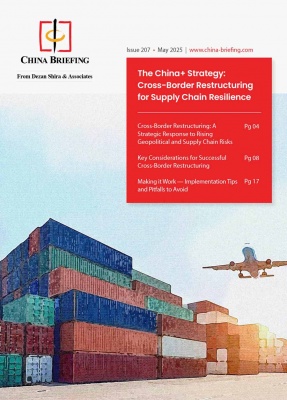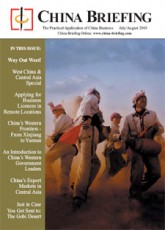A Business Guide to Western China – Local Markets and Exotic Exports
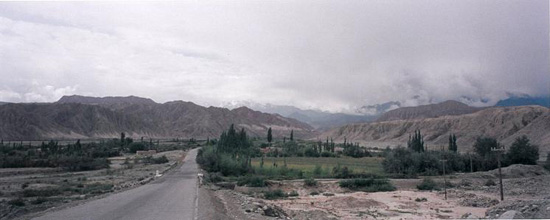
A complete overview of the trade dynamics and foreign investment opportunities from Xi’an to Xinjiang, and from Mongolia to Tibet.
Op-ed Commentary: Chris Devonshire-Ellis
Aug. 26 – China’s western regions have long held a fascination for many. The route of the ancient Silk Road, the mysteries of the orient, huge deserts, enormous mountains, a collision of religious, language and numerous tribal cultures, creating an enigmatic region not short of romance, mystery and intrigue.
Investing in China’s Western regions has long been a feature of China Briefing and our firm, Dezan Shira & Associates. We have run several editions of China Briefing magazine specifically about the area over the years ever since China first unveiled its “Go West” policy well over a decade ago. Much of that policy was in truth an internal issue; the central government encouraging wealthy eastern provinces and cities to “adopt” a western location and provide funding, rather like twinning cities. A handful of projects aside, it never really got off the ground, and despite relatively attractive tax breaks on offer, it has to date been only a handful of hardy foreign investors that have taken the plunge.
But what are the western regions? To many, they epitomize the Silk Road. Yet to the Chinese government, for investment incentive purposes at least, they include areas not normally associated with camels, perfumes from Arabia or the Call to Prayer. China, pragmatic as always, defines the West in its recent tax policy as comprising: Sichuan Province, Guizhou Province, Yunnan Province, Shaanxi Province, Gansu Province, Ningxia Hui Autonomous Region, Xinjiang Uighur Autonomous Region, Inner Mongolia Autonomous Region, Tibet Autonomous Region, Guangxi Zhuang Autonomous Region, and the Chongqing municipality.
In fact we wrote about the updated tax policies affecting these areas in some detail at the beginning of this month.
Yet to the people that live in these areas, and crucial for investors to understand, is that each of these areas are fundamentally and culturally different. They have different languages, different religious sensibilities, different topography, and vastly different consumer patterns. What is lumped together in tax policy is rather different in the practical issues as concerns foreign investment. So let’s examine each of these areas in detail and try and separate them into a coherent and more understandable order. As mentioned, we have conducted a huge amount of research into the area, both for our clients and for our readers, and I provide many links to relevant and more detailed articles about the specifics. Please feel free to follow these through.
The Silk Road Route

Muztagata Lake, near Taxkorgan
If one were to follow the old Silk Road definition, the areas that would fit into this would include Shaanxi, Ningxia, Gansu, and Xinjiang.
This then, includes the provincial capitals of Xi’an, Yinchuan, Lanzhou and Urumqi, with special mention to the city of Kashgar. They are definable as from commencing in Xi’an, heading westwards and becoming increasingly Muslim-influenced, which dramatically affects the language, culture and consumables the further west one goes. Han Chinese influence begins to diminish. It’s hard, for example, to buy pork in Urumqi, and much of the edible produce is Halal. The Silk Road actually had two routes around Xinjiang, both skirting the Gobi and Taklimakan Deserts: one to the north, which exits China over the Pamir and Tianshan Mountains and heads off further West through Kazakhstan, taking in the fabled cities of Samarkand, Bishkek and Merv.
The other, southern route, skirts the Taklimakan to the south, loosely following the Shule River, with the mountains of Tibet to the immediate south, passing through Khotan on the way to Kashgar, down the Karakoram Valley to Taxkorgan, and out into what was then India. This was the route in fact taken by the Chinese Monk Xuanzang, immortalized by the Chinese literary epic “Journey to the West.” Marco Polo also travelled this route. Today the nearest border city south of Taxkorgan is Gilgit, in Pakistan. From there the old southern Silk Road headed west to Persia.
The dominant factor in this entire region is the increase in Islamic influences, and China has even moved as far as to introduce Islamic banking and financing facilities here, including Islamic finance through Hong Kong. Recent high profile FDI projects here include Moet opening a sparkling wine facility in Yinchuan, while regulatory changes to make foreign investments in Xinjiang easier were touched on by us here. Such moves are having an effect. Both Xinjiang and Ningxia are attracting FDI from the Middle East and Turkey especially has an interest. Meanwhile, Ningxia has gone as far as to host a China/Arab States Investment Forum.
Apart from local products going into the China supply chain, with the exception of Xi’an (and to some extent Lanzhou), most agricultural produce here is packaged and marketed for Central Asian and Middle eastern consumption. To illustrate this dynamic, China last year established a new Special Economic Zone at its border with Kazakhstan and the same is being applied to Kashgar.
All of the provinces within this category have a strong Islamic influence, which is why China incorporates a form of Arabic on its RMB banknotes. Signage in the more heavily populated Muslim areas is in bilingual format. Parts of Gansu meanwhile are Tibetan in origin, and Tibetan language and script are used to the southwest of the province.
China of course has a vested interest in maintaining stability in Central Asia – it does not want unrest in Xinjiang, and is keen to suppress any Muslim insurgency. As has been recently apparent with small scale attacks in Khotan, a degree of sensitivity needs to be maintained while rooting out extremists. But by and large, China’s policy towards Central Asia on its doorstep is to improve life through the promotion of regional trade. We set out the Chinese government’s policy concerning this in the article “Stability and Development Twin Concerns for China in Central Asia.”
The key issues for investment into the Western silk road then are products with Islamic sensibilities, sales into Mainland China’s own supply chain, and exports to the markets of Central Asia, Turkey, the Middle East, some of the Mediterranean countries and Islamic Northeast Africa. Xi’an and much of Gansu remains heavily Han dominated, and both provide heavy industrial manufacturing for the Chinese market. China’s nuclear and space industries are based from Gansu, while Xi’an is a center of much of China’s engineering excellence.
The Northern Buddhist/Islamic Trade Route
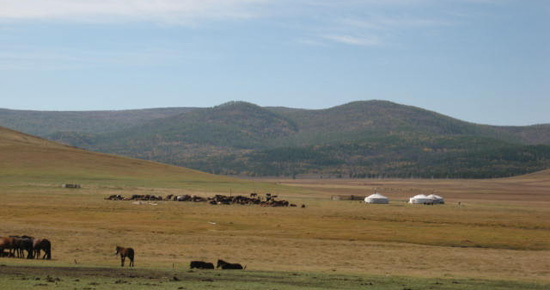
The Mongolian Plains
Another ancient route, actually a subsidiary of the main Silk Road, went a lot further north, through Mongolia, into the ancient kingdoms of Buryiana (around Lake Baikal in Siberia) and then headed west into northern Kazakhstan and beyond. This has long since been carved up by China (the Manchu’s especially), Russia and Mongolia, and while northern trade still exists between these areas, all that is really left of this route for the purposes of the Chinese government is the Inner Mongolia Autonomous Region. Carved out from the collapse of the Mongolian empire in the 1600s, the region still retains Mongolian sensitivities (Mongolian is an official language here) and nomadic herders, but is increasingly being settled, mainly by Han Chinese. The region, China’s third largest after Xinjiang and Tibet, runs along much of Northern China from east to west, bordering the Mongolian Gobi Desert to the north, the Chinese provinces of Heilongjiang, Jilin, Liaoning and Hebei to the east, and Shanxi, Shaanxi, Ningxia, Gansu and Xinjiang to the south and west. It too then takes in both Buddhist and Islamic sensitivities. These generally sit side-by-side quite comfortably – pigs are not an animal suitable for herding, so in dietary aspects there is little conflict between Mongolians and Muslims. In fact, some Mongolian herders, especially to the west where Kazak influences begin to rise, are also Muslim. Both Mongolian and Arabic scripts appear on Chinese banknotes, and road signs within the province are bilingual according to need.
Apart from possessing huge tracts of the Gobi Desert, Inner Mongolia is one gigantic pastureland and is one of China’s agricultural giants. Home to massive dairy operations, the province remains relatively sparsely populated, and with the border of Mongolia to the north, is keen to attract investment to further help settle the area. That has led to conflicts, and the differences between traditional Mongolian agricultural methods and Chinese settlement have not gone without mishap. I wrote about this issue very recently, explaining the differences between the two in the article “A Tale of Two Mongolias.”
Inner Mongolia as concerns the foreign investor is really about two functions: agriculture (the dairy industry in particular) and mining. The province is rich in coal and rare earth deposits, much of it destined for China’s internal consumption. There is tremendous growth and relative wealth creation occurring in the province however, and two of Inner Mongolia’s cities are among the top five fastest growing cities in China today. Meanwhile, to the east, cities such as Manzhouli bordering Russia are developing as huge processing centers for Siberian lumber.
For foreign investors then, Inner Mongolia represents mainly a market to develop for getting locally sourced products into China’s own supply chain and consumption. Exports from here to Mongolia, Russia and Kazakhstan are minimal.
The Tea Road Route
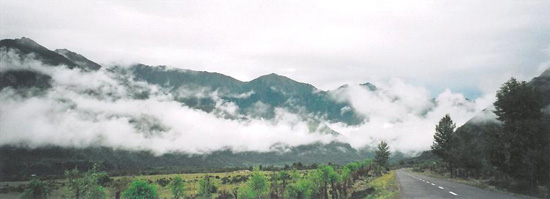
Road south from Lhasa to Nathu La
Less well-known than the Silk Road, the Tea Route was, as its name suggests, involved in the trading of tea – in addition to other botanical, medicinal and agricultural produce. Historically, it also acted as a trade bridge between China and India, and as such also serviced Burma, and to the south, Southeast Asia. The Chinese provinces and regions that come into this category are predominantly Buddhist strongholds, and have (with parts of Tibet and western Sichuan excepted) for the most part been well absorbed into the mainstream Chinese culture. This area includes Sichuan, Guizhou, Guangxi, Tibet and Yunnan. They are characterized by being mountainous, lush, and are influenced by cultures as diverse as ancient Khmer to the very strong presence of Tibetan Buddhism. Chinese RMB banknotes feature both Tibetan and the Zhuang script on them, the latter being derived from Khmer and the ancient kingdoms of Southeast Asia, especially that of ancient Angkor Wat, whose culture extends well into South Yunnan.
Sichuan, however, is an extremely diverse province, taking in the major cities of Chengdu, and for the sake of argument (it was actually split off from Sichuan and made a municipality in 1997), Chongqing. The province is in part highly mountainous, and to the west and south very Tibetan-influenced. Chongqing meanwhile is highly industrialized, whereas Chengdu has developed into a service center, not least for light engineering and aircraft manufacturing and service. The two principal cities thus retain entirely different characteristics, yet to some extent service the same region. That gives rise to the question of Chengdu or Chongqing and the need to conduct cost and business analysis of each. A regional economic powerhouse, we have conducted further research and examined the strength of Sichuan’s economy and compared it to nearby countries here. Chengdu remains a more favored destination for many expatriates, not least due to its pleasant weather and more laid back environment. It is also developing as a light industrial manufacturing base, and has a strong agricultural and textile industry. But for many, the large manufacturing opportunities are in Chongqing. Being on the Yangtze River, it is thus connected to Shanghai, but logistics and local favoritism have proven difficult obstacles in the past, yet not insurmountable. Separating the two is, to some extent, dependent more upon individual business specifics, and both should be compared as to the suitability for particular industries – and the applicable incentives, as these differ.
Yunnan, on the other hand, may be considered as a gateway to Southeast Asia. The province runs from the north, and a mountainous border with Tibet, to the south and a border with Vietnam. Consequently it is the latter geographical feature that is creating the most impact on Yunnan today, as major reinvestment in Southeast Asia, and the development of road-rail links from Yunnan’s capital of Kunming south to Singapore, while taking in much of Indochina, dictate that this area can be expected to boom, not least due to China’s new Free Trade Agreement with ASEAN. The agreement links up 7,000 duty-free goods between China and ASEAN members Brunei, Indonesia, Malaysia, the Philippines, Thailand, and Singapore, with the other group members – Vietnam, Cambodia, Laos, and Burma – are planning to be included in the deal by 2015. Beijing has already advised Chinese companies to be ready to take advantage of this, as strong a hint as any that South Yunnan, Kunming and Nanning are great places for foreign investors to be.
Southeast Asia currently only accounts for 8 percent of China’s exports, but Beijing sees great opportunity for growth within their neighbors to the south. The free trade block has brought together the region’s approximately 1.9 billion people along with a combined GDP of US$6 trillion and a total trade volume nearing US$4.5 trillion. Just this year, China-ASEAN trade jumped 47 percent and as China continues to boost economic ties with ASEAN countries, Yunnan can be expected to boom. We also discussed and described the Southeast Asian rail network that will link Yunnan to the region, and have further explored the opportunities this will bring Yunnan. This also includes observations about how development on Yunnan’s western border will affect trade with Burma, Bangladesh, and India.
The knock-on effect of China’s ASEAN FTA will also spill over into Guangxi, which is also included as part of China’s western regions and applicable tax incentives. Situated between Yunnan to the immediate west, and China’s wealthiest province of Guangdong to the east, lower costs in cities such as Nanning are likely to hasten Guangxi’s development as a processing hub for goods from Southeast Asia destined for Hong Kong, Shanghai and wealthy Southeast Chinese cities. This is likely to be further boosted following Guangdong’s cross-provincial high-speed rail network linking both sides of the Province together for the first time across the Pearl River. Canny investors seeking lower costs will take advantage of Guangdong’s infrastructure to get Guangxi processed products into more lucrative markets.
Guizhou, meanwhile, suffers from being inland, in addition to very mountainous, and it remains China’s poorest region. That said, it is highly forested, and is very eco-minded; its capital, Guiyang was the first city in China to issue a recycling law. It has both a vibrant aquatic and textiles industry, yet remains a market that is relatively difficult to export from. This of course has not helped investment, but Guiyang is relatively prosperous, competition is lower than in other cities, and green industries may find a welcome home there. It is also an exceptionally beautiful area of China – the nation’s largest waterfall is here and there is a strong domestic tourist attraction to the province.
Finally, Tibet is also part of the western regional tax incentive plan, and remains as enigmatic as ever. Traditionally a major trading hub between China and India, it is gradually reclaiming that position, but problems remain with difficult terrain, not to mention political considerations regarding a nervous India that is not especially keen to have well-developed Chinese infrastructure right on its northern border – and particularly so as China also claims the Indian state of Arunachal Pradesh as being “South Tibet.”
Another contentious point is China’s damming of the Brahmaputra River, part of which denotes the border between Tibet and India south of Nyingtri, and all of which eventually flows south into India itself. These are likely to defer any meaningful further development of the Nathu La Pass, the traditional trade route, anytime soon.

The Brahmaputra River. Arunachal Pradesh (India) to the left, Tibet (China) to the right.
That said, Indian-Chinese trade is booming and grew by some 50 percent in 2010. However, it seems unlikely that Tibet will share in any of that commerce. Although what is happening is that the development of the Qinghai Rail into Lhasa is allowing better access to Mainland Chinese markets for Tibetan manufactured goods. This is now being further extended via Xigaze to Nepal linking Kathmandu directly to Lhasa and then on to China’s national rail network.
Tibet is also seeing new airports being developed and recently acquired its own airline, its first expressway, and has just opened its first commercial bank. This appears to have been enough to see the St. Regis Hotel chain, the luxury brand of Starwood, open a five star hotel in Lhasa recently.
Yet occasional unrest still surfaces, and issues with the Dalai Lama mean that politics and religion still need to be factored in as risk elements for foreign investors. But as I said many years ago, if foreign investors, who tend to be more culturally appreciative than Chinese investors, do not invest in Tibet, then China will. And that is likely to result in an increase in white tiled blandness, exactly the sort of development Tibet does not need. We discussed opportunities and developments in Tibet in this recent article.
Summary
Foreign investment in China’s western regions remains something of a mixed bag, although some tremendous opportunities have recently evolved. For Tibet and Xinjiang, in addition to the more remote areas of northern Yunnan, western Sichuan and southwest Gansu, attention to the regional political and religious stresses, many of them hundreds of years old, needs to be part of any risk assessment. However, for other areas, including the dynamics of Xi’an and its excellent engineering capabilities, Chengdu and Chongqing’s favorable central China positions, and the integration of Yunnan and Guangxi into the Free Trade Agreement with ASEAN, exciting potential remains, and will continue to develop.
Taking advantage of China’s tax and investment incentives therefore makes great sense while these areas are still on the upward trend. They will, of course, disappear when the central government considers them no longer necessary in order to attract FDI.
These then are my personal tips as far as the western region’s FDI hotspots by major city: Kunming (Yunnan), Nanning (Guangxi), Hohhot and Baotou (Inner Mongolia), Xi’an (Shaanxi), Chengdu and Chongqing (Sichuan). Others, especially in Xinjiang, I expect to catch up fast. Real estate in Kashgar, for example, has risen faster in value than any other city in China this year – all due to the new Free Trade Zone. Opportunities it seems, are available in all shapes and sizes, depending upon industry specifics.
Dezan Shira & Associates, in conjunction with China Briefing, has produced a series of guides to all of the regions, cities and provinces featured in this article, including demographics, regional GDP data, business and industrial overviews, addresses of free trade and development zones and details of available incentives. These are available, with descriptive links, below. Each of these cities of course are inland. This changes the investment dynamics in terms of logistics costs, which are fundamentally different from those on China’s coastal cities. China Briefing has written about this in some detail, and explains cost differences between coastal cities and inland locations in this recent issue of China Briefing magazine: Operational Costs of Doing Business in China’s Inland Cities.
Additional useful information may also be gleaned from the following articles: China’s Fastest Growing Provinces (five provinces, including Shaanxi and Inner Mongolia) and Heading for the Borders – Opportunities along China’s Frontiers, while a previous recent executive summary as to why foreign investors should consider West China is located here.
Available Incentives
As was spelled out in the recent tax circular, the tax incentives applicable to foreign investors interested in the Western regions are mainly within the encouraged industry sector, and are not, as some other sources have reported, a blanket 15 percent on corporate income tax. Accordingly, within all of these regions, the standard income tax rates apply (25 percent) – it is only when your business is involved in encouraged industries that the benefits kick in. We understand that the “Catalogue of Encouraged Industries in the Western Region” is still being created and will be issued shortly. As soon as it is, we will feature it here on China Briefing news. Investors with urgent requirements may contact us now for advice in order for us to take matters up directly as appropriate.
Other incentives also apply, namely an exemption of import duties on machinery for self use, and tax breaks for businesses investing in transportation, electric power, and water conservancy. We have also found in the past that local governments may also grant preferential rates for land use, and within the agricultural sector in particular.
Dezan Shira & Associates meanwhile continues to advise foreign clients on investments into China’s western regions, and as can be ascertained, have a great deal of experience and expertise in doing so. The firm can be reached for foreign investment tax, business advisory, establishment, and legal advice at info@dezshira.com.
Chris Devonshire-Ellis is the founding partner and principal of Dezan Shira & Associates. The firm specializes in handling foreign direct investment into China, and maintains 12 fully staffed and licensed offices across the country. He may be reached directly at chris@dezshira.com.
Related Reading
 Business Guide to West China
Business Guide to West China
172 pages. This book is a detailed overview of West China, including the provinces of Gansu, Guizhou, Ningxia, Shaanxi, Sichuan, Tibet, Xinjiang and Yunnan, and includes detailed introductions to the key cities of Chengu, Chongqing, Kashgar, Kunming, Lanzhou, Lhasa, Guiyang, Urumqi, Xining and Yinchuan.
 Business Guide to Central China
Business Guide to Central China
120 pages. A comprehensive introduction to Central China, including the provinces of Hebei, Henan, Hubei, Inner Mongolia, Jiangxi and Shanxi, and includes detailed introductions to the key cities of Baotou, Chengde, Changsha, Datong, Hohhot, Kaifeng, Luoyang, Manzhouli, Nanchang, Taiyuan, Wuhan, Yichang and Zhengzhou.
 Business Guide to South China and the Pearl River Delta (Second Edition)
Business Guide to South China and the Pearl River Delta (Second Edition)
196 pages. A full description of South China, including Hong Kong, Macau, and the provinces of Guangdong, Fujian, Guangxi and Hainan, in addition to detailed introductions to the cities of Dongguan, Foshan, Fuzhou, Guangzhou, Haikou, Huizhou, Nanning, Shantou, Shenzhen, Xiamen, Zanjiang, Zhaoqing, Zhongshan and Zhuhai.
- Previous Article China and U.S. Seek Closer Cooperation on Audit Oversight
- Next Article China to Permit Foreign Investment in RMB













